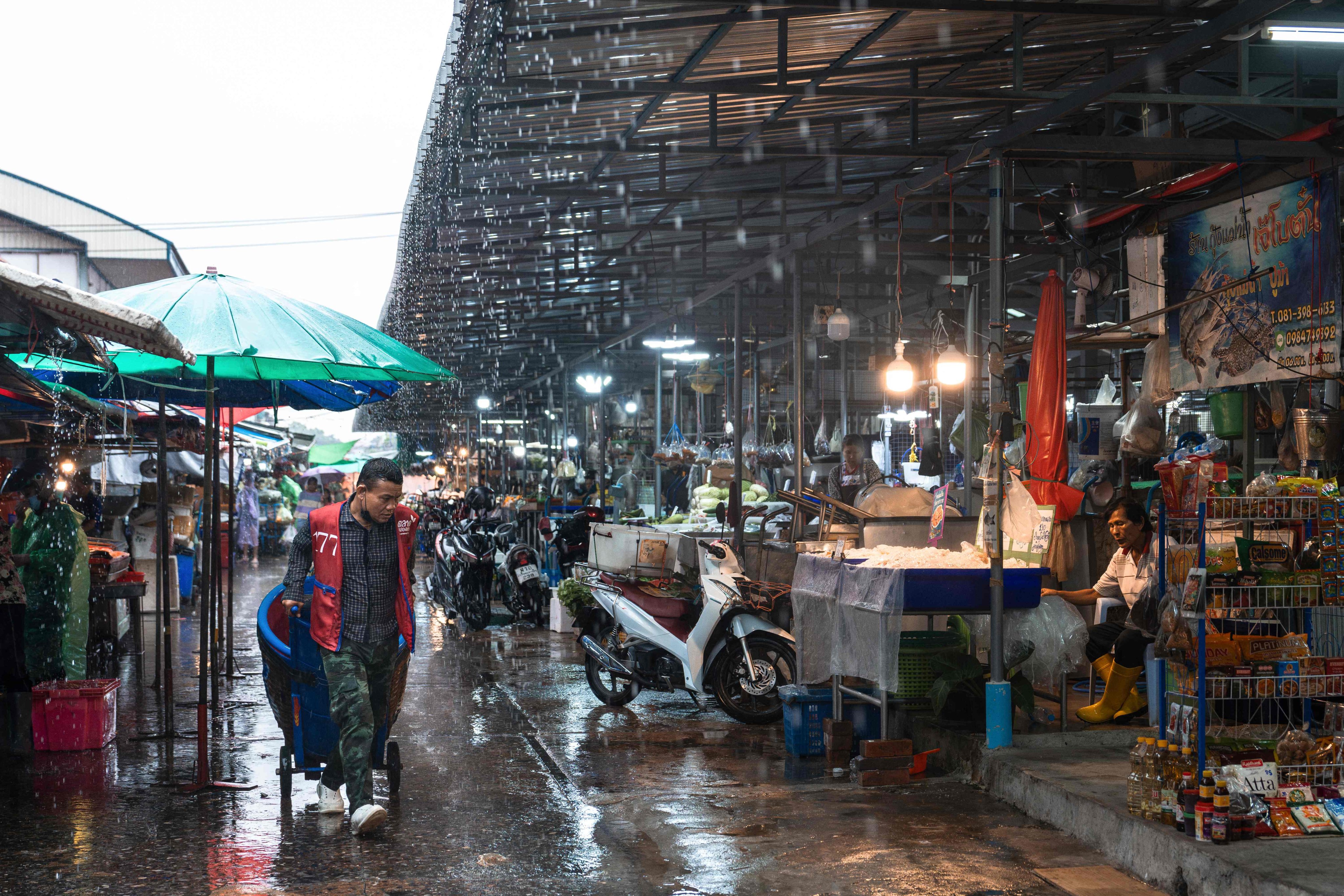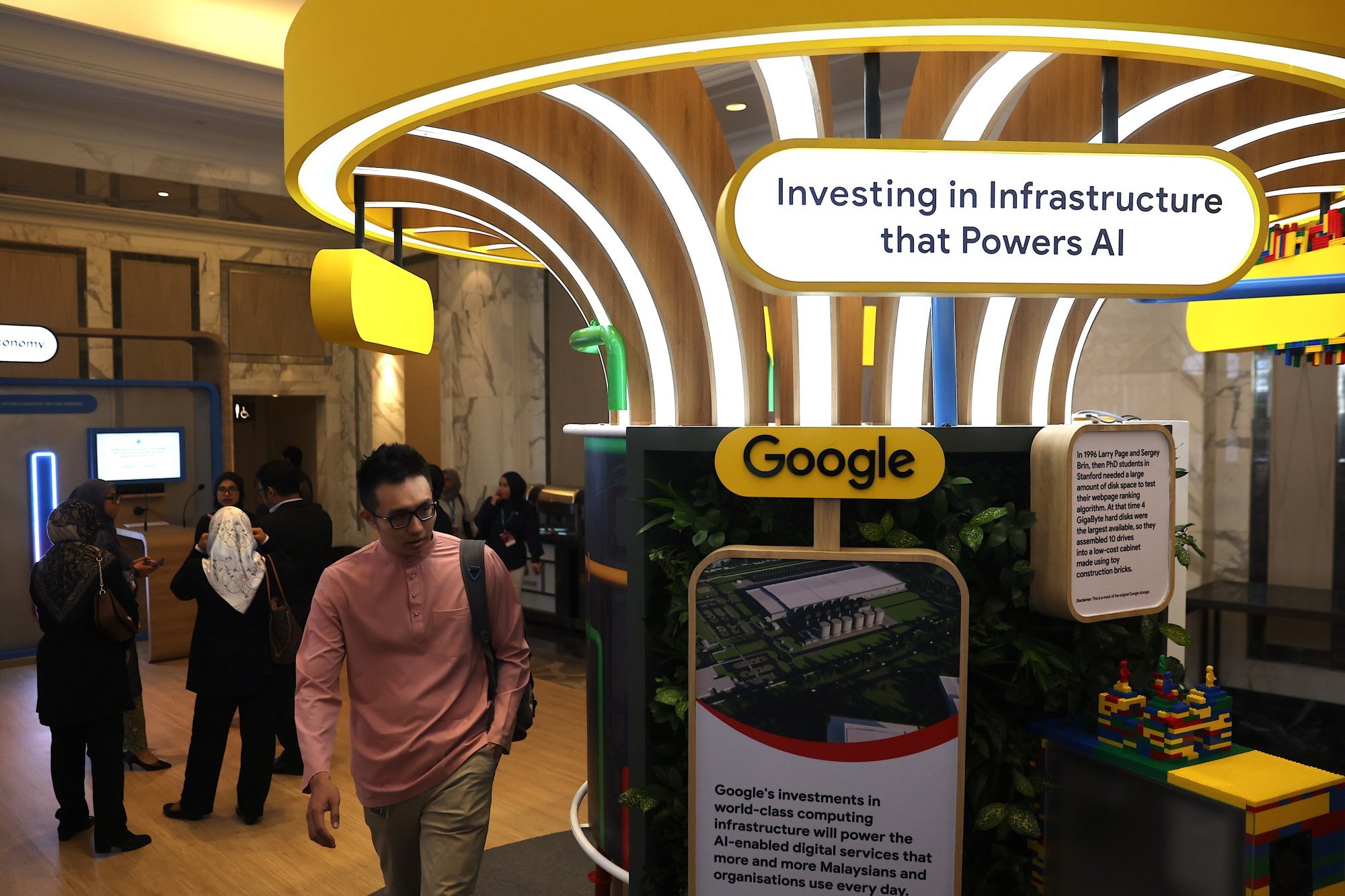In Southeast Asia’s climate battle, AI could prove a double-edged sword
AI has the potential to be a new engine of growth but should not be a panacea for the region’s climate problems

Southeast Asia has emerged as a bright spot in the global artificial intelligence (AI) race, with a market size projected to reach US$8.9 billion and an annual growth rate of more than 27 per cent this year.
Recently, this upward trajectory has been further supported by strong AI-related investments, with more than US$30 billion invested into the region in the first half of 2024. A large proportion of investments pledged have gone towards infrastructure development, along with research and development.
Key investments include Apple’s US$250 million campus expansion in Singapore; Google’s US$2 billion investment to develop Malaysia’s first data centre and Google Cloud region – a physical location equipped with infrastructure that enables faster, more efficient access to high-performance cloud services; Microsoft’s US$1.7 billion deal to enhance Indonesia’s cloud and AI infrastructure; and Nvidia’s announcement to open the Vietnam research and development centre. If implemented properly, AI could be a new engine of growth for the region, raising its GDP by 10 to 18 per cent, or an additional US$1 trillion by 2030.

For Southeast Asia, AI’s potential transcends its economic benefits. As a region vulnerable to the impacts of climate change – with nearly 700 natural disasters recorded by the Asean Disaster Information Network in the first five months of 2025 alone – the predictive power of AI has been touted as a strategic tool against the impact of global warming. In the Philippines, AI-powered weather forecasting is accurately predicting weather patterns at the neighbourhood level, owing to its imaging resolution that is 10 times higher than previous forecasts. In Thailand, the AI Nowcast system is forecasting rainfall in Bangkok three hours ahead of time, enhancing the city’s flood preparedness. AI is also being used to monitor air quality in the Indonesian capital of Jakarta, one of the world’s most polluted cities, and promote a healthier urban environment.
The expansion of Generative AI (Gen AI), large language models and machine learning has strengthened multi-hazard, people-centred early warning systems from being purely hazard-based to becoming impact-based. With its capacity to process large volumes of data and generate real-time simulations, AI can enhance systems to forecast not only weather events, but also their potential impacts and the areas most likely affected. Such a system significantly enhances disaster preparedness and enables the adequate deployment of preventive measures, especially in vulnerable communities.
However, despite AI’s positive potential, the region should not view it as a panacea in this climate-changing world. In short, the same AI that is used to fight the effects of climate change also aggravates the problem.

First, data centres that power AI are energy-intensive, consuming energy not only to store, process and send data, but also for the continuous electricity needed to cool these facilities.
The International Energy Agency estimates that data centres and data transmission networks each account for 1 per cent to 1.5 per cent of global energy consumption and are responsible for 1 per cent of energy-related greenhouse gas (GHG) emissions in 2022. Google’s 2024 Environmental Report also highlighted a 48 per cent increase in GHG emissions compared to 2019 figures, mostly driven by increased energy consumption in its data centres. While there is currently only one Google data centre in Southeast Asia, located in Singapore, two more are under construction – one in Malaysia and another in Thailand.
Besides Google’s data centres, the region also hosts nearly 500 data centres of varying capacities. While most are still in the planning or early stages of development, the region’s total live capacity reached nearly 2,000 megawatts (MW), with Singapore, Indonesia, and Malaysia leading at 1,000MW, 200MW, and 120MW, respectively. On top of their sizeable electricity consumption, which still largely relies on non-renewable sources, data centres also consume vast amounts of water for cooling. A 100MW facility consumes about 4.2 million litres of water daily, including from clean, potable water.
The surging demands of data centres pose a significant environmental burden and, if left unchecked, could further strain the region’s resources. With rapid urbanisation and climate change impacts also expected to trigger water consumption, this will undoubtedly put a stress on the region, where more than 100 million people are facing water scarcity.
Second, aside from data centre’s GHG emissions and electricity and water demands, the region is facing challenges with managing electronic waste (e-waste). In 2021, Southeast Asia generated about 12.3 million tonnes of e-waste. The rapid growth of AI is expected to exacerbate this challenge, as hardware used to train Gen AI models, such as central processing units, graphics processing units, and servers are more frequently discarded due to their short lifespans. These components are predicted to generate an additional 5 million tonnes of e-waste globally by 2030, representing a small but growing share of the 62 million tonnes of e-waste produced in 2022. Without proper disposal and recycling, e-waste can release toxic substances like lead and mercury, posing serious risks to environmental and human health.

Despite AI’s environmental repercussions, the region should not completely discount its usage. Instead, when investing in AI tools, countries should also consider AI’s climate change impacts and integrate sustainability guidelines in their policies and implementation. Currently, most safety concerns within AI governance are framed within the context of data protection and privacy, as well as the ethics of ensuring the development of fair, transparent, and accountable systems that consider local knowledge and cultural pluralism. While Asean’s Guide on AI Governance and Ethics and several national regulations including Indonesia’s National AI Strategy and Singapore’s National AI Strategy 2.0 do mention AI’s environmental impact, these documents fall short of prescribing concrete solutions.
Asean has taken a non-binding and voluntary approach to its AI regulation. While it is important to strike a balance between strict regulation and fostering innovation, it is equally important to consider regional and national standards that promote energy efficiency in data centres to fully reap the benefits of the region’s booming AI sector.
One standard that Asean and its member states should encourage is implementing greater requirements for data transparency on AI usage’s environmental impacts. One such example at the country level is the 2024 Guideline for Sustainable Development of Data Centres by the Malaysian Investment Development Authority. This requires organisations to declare power, carbon, and water usage effectiveness. Having more data on AI’s GHG emissions, water consumption, and transparency around the data centres’ total energy consumption would enable more accurate assessments of AI’s benefits against its environmental repercussions.
The Asean Centre for Energy’s white paper, “Building Next Generation Data Centre Facility in Asean”, is a first step at identifying what the region can do to meet sustainability requirements in the next wave of AI data centre development. This includes exploring alternative and green sources to power data centres, and fostering public-private partnerships such as those with Amazon and Microsoft to advance the use of emerging technologies for sustainable data centres.
Although Asean adopted the Framework for Circular Economy for the Asean Economic Community in 2021, only four of its 10 member states have established dedicated national circular economy strategies which seek to minimise waste and pollution. Currently, Thailand is at the forefront of e-waste circularity through its promotion of the Right to Repair movement. On the circularity of electronics, Asean can leverage dialogue partners’ knowledge, including through programmes such as the Asean-Japan Resource Circulation Partnerships on E-Waste and Critical Minerals. The collaboration between Asean and Japan promotes the collection, recovery, and recycling of critical minerals from e-waste to reduce environmental pollution.
To ensure the sustainable long-term use of AI, it is crucial to acknowledge its negative consequences and account for its potential contributions to the climate crisis in regulatory frameworks. Without careful consideration, such systems may inadvertently undermine and be counterintuitive to the very climate goals that they aim to achieve.
Indira Zahra Aridati is a Research Officer at the Asean Studies Centre, ISEAS – Yusof Ishak Institute. This article was first published by ISEAS – Yusof Ishak’s commentary website fulcrum.sg.